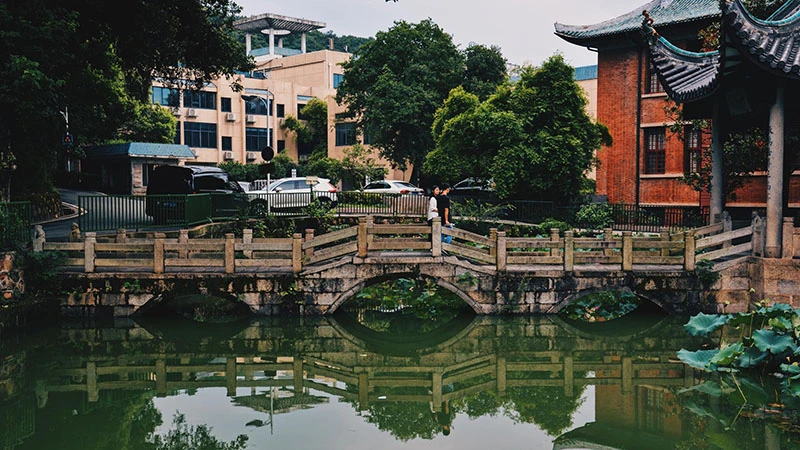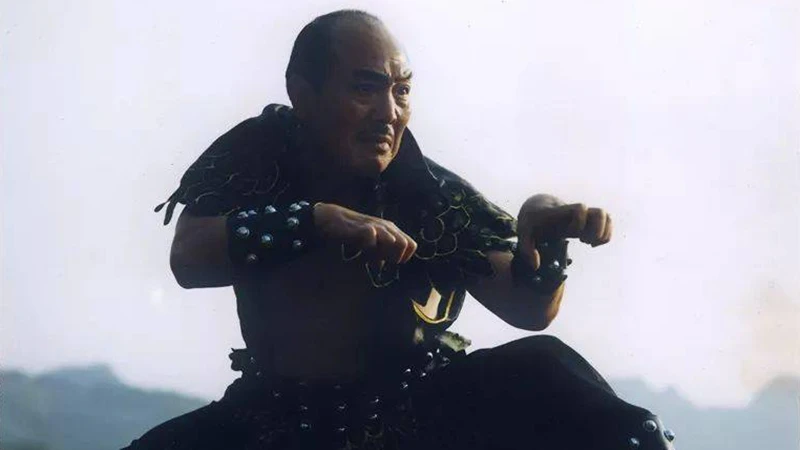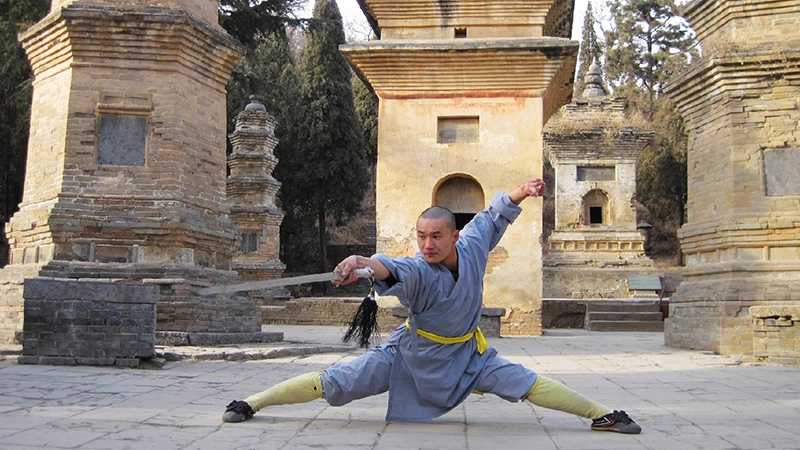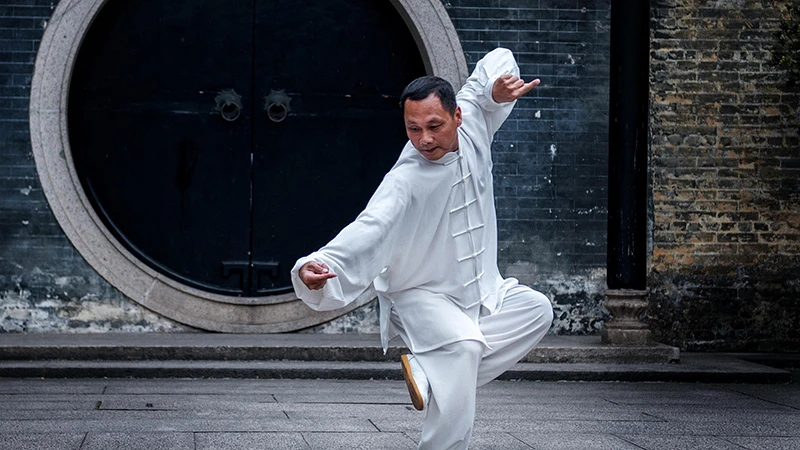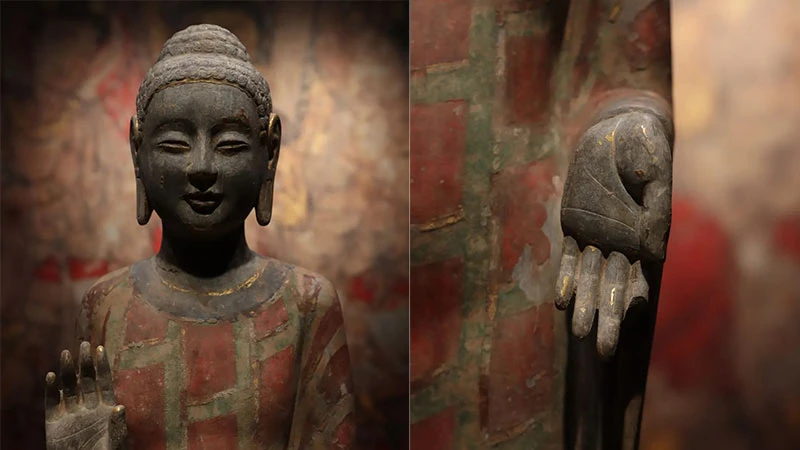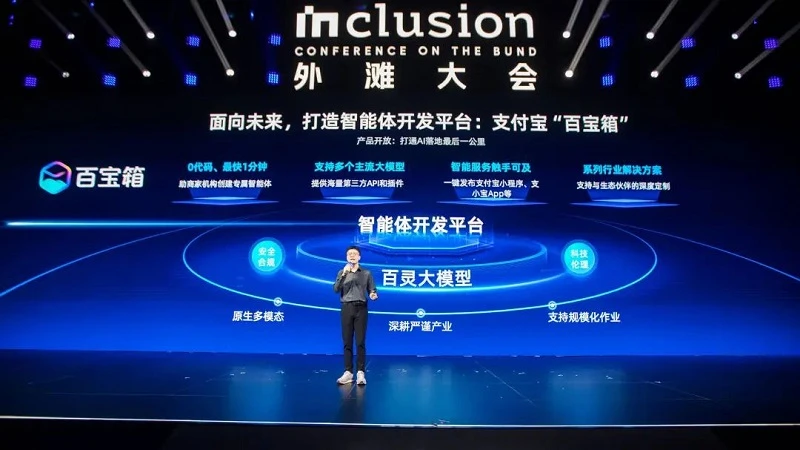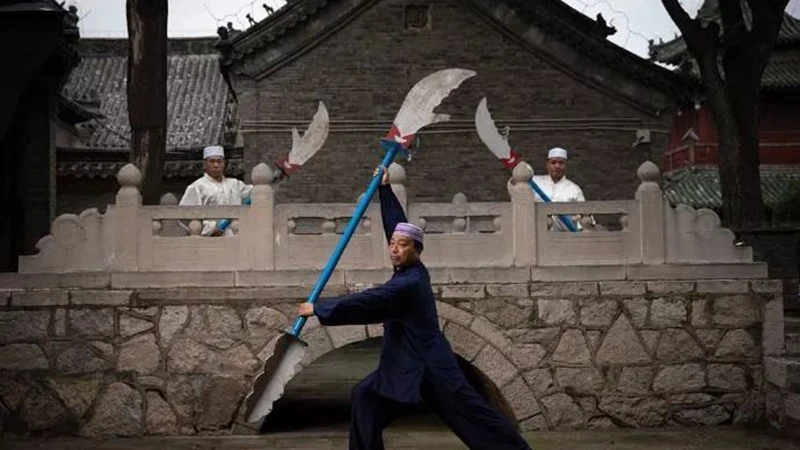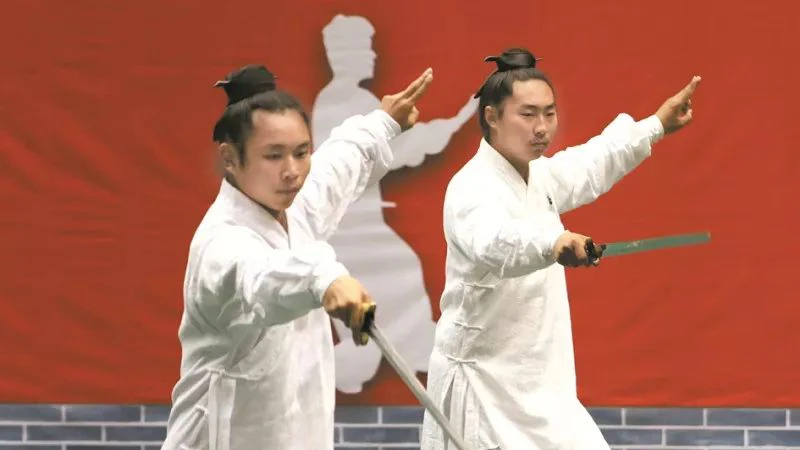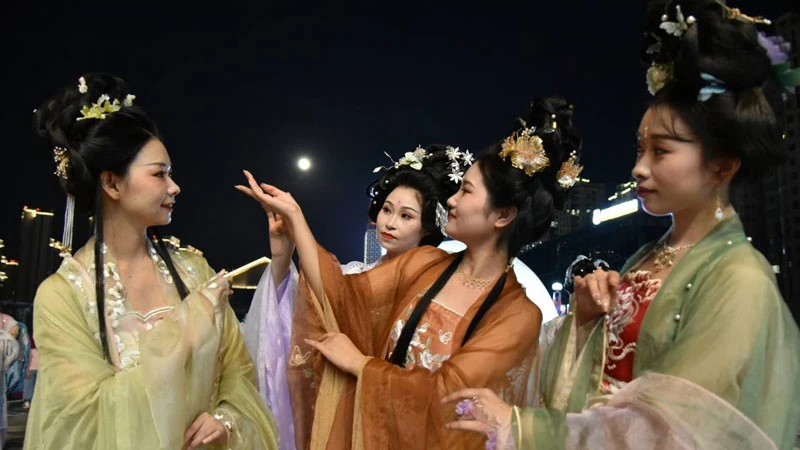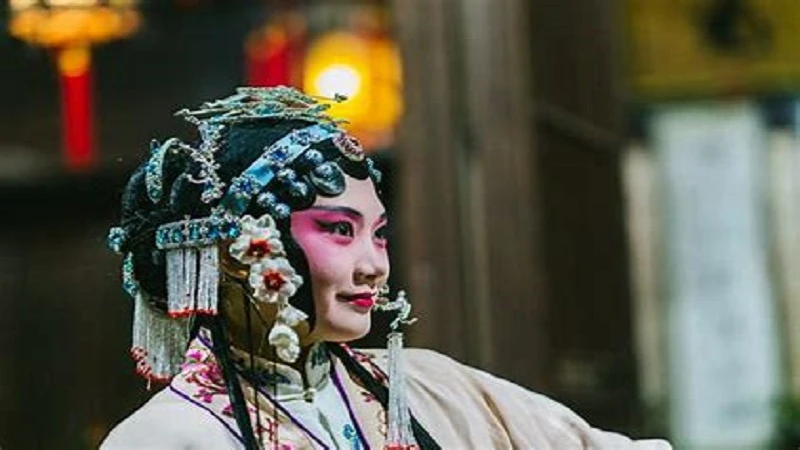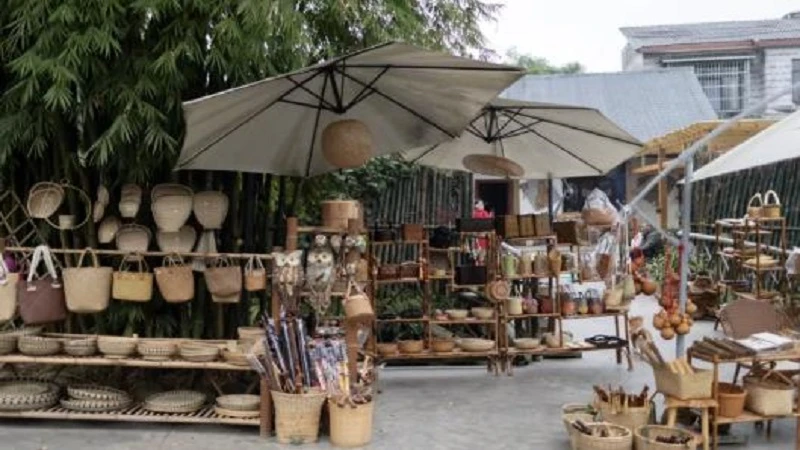Article
搜索结果:
-
Nurturing Your Lungs for Seasonal Wellness
As autumn sweeps in with its cool breeze and falling leaves, traditional Chinese medicine (TCM) emphasizes the importance of seasonal health. “Nourish the liver in spring, the heart in summer, the lungs in autumn, and the kidneys in winter, while supporting the spleen and stomach throughout the year.” With autumn's arrival, it’s time to turn our attention to nurturing the lungs. Not only does this align with the rhythms of nature, but it also lays the foundation for robust health throughout the year. Autumn Dryness and Seasonal Blues: Protect Your Lungs The transition from the lush vitality of summer to the cooler, drier days of autumn brings significant changes in our bodies. As nature sheds its summer abundance, the human body must also adapt. In TCM, the lungs are considered delicate organs, easily affected by environmental shifts, especially dryness. Supporting lung health in autumn equips the body with the strength needed to withstand winter’s harsher conditions. Dr. Huo Lili (霍莉莉), a chief physician at the Shanghai Integrated Traditional Chinese and Western Medicine Hospital, explains that autumn dryness can deplete the body's essential moisture, especially harming the lungs. As the climate shifts from humid to arid, dryness infiltrates our respiratory system,… -
Chen Master: The Modern Power of Tai Chi
As modern life speeds up, stress and challenges have become constants for people worldwide. Whether it’s work-related pressure, family responsibilities, or the overwhelming pace of technology, the need to find balance has never been more critical. One surprising solution to these modern woes is an ancient practice: Tai Chi. This traditional Chinese martial art offers a blend of physical and mental training that has become increasingly popular, not only in China but around the globe. More than just a martial art, Tai Chi embodies philosophical principles that harmonize body, mind, and spirit. In an era that demands both resilience and tranquility, Tai Chi provides a sanctuary of calm in the midst of chaos. On October 20th, in Wuhan, Chen Zhenglei (陈正雷), a revered 11th-generation successor of Chen-style Tai Chi and a national-level inheritor of China’s intangible cultural heritage, gathered with Tai Chi enthusiasts for a special performance and teaching event. At over seventy years old, Chen Zhenglei continues to dedicate his life to spreading Tai Chi’s teachings. Known as the "Golden King of Tai Chi" within martial arts circles, his mission is clear: to preserve and expand the influence of this cultural treasure for future generations. The art form was… -
The Ancient Guardians of Yuelu Mountain: Six Dynasties Pine
A Historical Giant in the Heart of Changsha In the shadow of the majestic Yuelu Mountain (岳麓山), nestled near the iconic Lushan Temple (麓山寺) in Changsha, stands a remarkable living relic—an ancient Luohan pine (罗汉松) tree, famously known as the "Six Dynasties Pine." This grand tree is not only a symbol of natural beauty but also a testament to history, believed to have been planted during the Six Dynasties period (circa 4th century). With an estimated age of over 1,740 years, the Six Dynasties Pine is the oldest tree within Changsha’s urban area, standing as a timeless guardian of the temple grounds. While the Lushan Temple is currently undergoing renovations and closed to the public, I had the rare opportunity to visit the sacred site and witness this ancient tree up close. Guided by local staff, I stood before the tree, marveling at its sheer size and grandeur. Its crown spreads across an impressive 100 square meters, and despite centuries of exposure to the elements, the tree’s leaves remain vibrant and green. The Mystique of Luohan Pines and “Pine Gate” Lushan Temple, founded during the Western Jin Dynasty in 268 AD, holds the distinction of being Changsha’s oldest Buddhist temple.… -
Tai Chi Connects Community for Health and Harmony
Tai Chi in a Modern Community In a bustling world where health and wellness are increasingly valued, a recent event at the Changhai (长海) Road Community Center in Shanghai sought to merge traditional wisdom with community wellness. Themed "Healthy Shanghai, Boundless Tai Chi," this event invited Tai Chi enthusiasts Lu Xuejun (鲁学军) and Nie Yonggang (聂永刚) to bring the grace and philosophy of Yang-style Tai Chi to local residents, offering not only an introduction to the ancient art but also a hands-on wellness experience that bridges body, mind, and community. Tai Chi has long been celebrated in China for its gentle yet powerful movements, harmonizing physical health and mental well-being. Recognized as a national intangible cultural heritage, Tai Chi has become a staple in traditional Chinese culture, attracting people from all walks of life. With its slow, deliberate movements, Tai Chi fosters calm, flexibility, and strength, making it an appealing choice for a wide range of ages. The Yang style, known for its simplicity and accessibility, resonates particularly well within communities. As one of Tai Chi’s prominent styles, it emphasizes balance, straightforward forms, and a focus on health, making it both a physical exercise and a cultural treasure. Learning the… -
The Year of "Breaking the Tai Sui"
What's the Tai Sui In the rich tapestry of Chinese culture, the concept of "Tai Sui" plays a significant role, especially as we enter a new lunar year. Translating to "breaking the Tai Sui," this phenomenon is more than a mere superstition; it reflects the deep-seated beliefs of a society that reveres celestial bodies and their influence on human life. "Tai Sui" refers to Jupiter, known as the "year star," which symbolizes the governing forces of fortune and misfortune. When one's personal birth year aligns unfavorably with Tai Sui, it is believed to bring about challenges and obstacles throughout the year. Those affected by this cosmic alignment often seek protection through rituals and offerings, hoping to appease the celestial deity and mitigate adverse influences. While some view this alignment as a harbinger of misfortune, others interpret it as an opportunity for growth and self-reflection. The Dual Nature of Breaking the Tai Sui The implications of "breaking the Tai Sui" can be understood on two levels: the challenges it presents and the opportunities it offers. Challenges Ahead Entering a year of "breaking the Tai Sui" often brings a wave of anticipated hurdles. Many people report experiencing difficulties in various aspects of… -
The Spirit of the Rock Eagle Fist
The Fierce Essence of Rock Eagle Fist (岩鹰拳) In the rugged landscapes of Hunan Province, the mighty Rock Eagle soars high, embodying strength and precision in its hunting prowess. This fierce bird of prey, known for its sharp talons and iron-like wings, is a symbol of resilience, navigating the steep cliffs and ancient trees of the mountainous terrain. As the sun rises and sets, flocks of Rock Eagles can be seen circling in the sky, their robust forms carving through the air with grace and power. The martial art known as Rock Eagle Fist, or Rock Eagle Fist, draws its inspiration from these magnificent birds. Recognized as a provincial-level intangible cultural heritage in Shaoyang City (邵阳市), this unique style of martial arts captures the essence of the Rock Eagle, echoing its fierce spirit and dynamic movements. At the forefront of this tradition is Liu Liehong (刘烈红), a master martial artist born in 1943. As a seventh-degree black belt and a national martial arts judge, Liu has dedicated his life to preserving and promoting Rock Eagle Fist, ensuring that its legacy lives on. A Legacy of Artistry and Skill The origins of Rock Eagle Fist can be traced back to the… -
The Eagle Claw Fist in Foshan Schools
At the break of dawn, the serene grounds of Yidong Primary School (怡东小学) in Foshan echo with sharp shouts of “Hey! Ha!” as students diligently practice Eagle Claw Fist. Each movement is precise, each punch fierce, and each step calculated. For these young students, martial arts isn’t just an after-school activity; it’s an integral part of their daily routine. Eagle Claw Fist, a traditional form of Chinese martial arts, has made a strong comeback in the local educational scene, specifically in Foshan’s schools, where it’s now taught as part of the daily physical education program. At Yidong Primary School, it’s even become the official morning exercise. The man behind this resurgence is Xu Fengjin (许凤金), vice president of the Foshan Eagle Claw Fist Association and a passionate advocate for martial arts in modern education. Recently recognized as a Foshan Intangible Cultural Heritage inheritor, Xu has made it his mission to keep this centuries-old tradition alive and well. Bringing Martial Arts Back to School The introduction of Eagle Claw Fist in schools reflects a broader movement in China: the return of traditional culture into everyday life. As modern lifestyles drift further from their cultural roots, initiatives like Xu Fengjin’s offer a… -
Southern Praying Mantis: Modern Kungfu
Southern Praying Mantis in Huizhou In the heart of Huizhou, a centuries-old martial art known as Southern Praying Mantis Kung Fu has been preserved and nurtured, despite the challenges of modern times. This unique style of combat, passed down through generations, is a testament to the resilience of traditional Chinese martial arts. Originally from the Shaolin Temple (少林寺) in Fujian during the early Qing dynasty, the art faced a slow decline in Huizhou before being revitalized by its fifth-generation master, Chen Jianming (陈建明). Through his passion and dedication, the Southern Praying Mantis style has once again captured the interest of young practitioners, recently being named an intangible cultural heritage of Huizhou. Master Chen, at 67 years old, is as energetic and lively as ever, and continues to train students from his home, where he has transformed his modest living room into a martial arts training ground. His story and the art he practices reflect both the physical and spiritual essence of martial arts—an art that’s deeply rooted in tradition, discipline, and respect. From Training Halls to Living Rooms Chen Jianming’s martial arts journey began in his early years, when he discovered his love for martial arts. As he grew older,… -
The Art of Dual Mastery: Preserving Mantis Boxing
Yu Yongbo (于永波), the representative inheritor of the intangible cultural heritage of Mantis Boxing, has spent half his life dedicated to two pursuits: the rigorous practice of Mantis Boxing and the graceful mastery of Slim Gold Script (瘦金体) calligraphy. These two arts, one martial and the other literary, may seem worlds apart, but they are both deeply rooted in his love for Chinese culture and tradition. “For me, practicing either martial arts or calligraphy is a way of cultivating both mind and body,” Yu says. “It’s not just about personal improvement, but also about passing these exceptional traditions to future generations.” A Journey in Martial Arts Growing up in a family with a history of martial arts in Laiyang (莱阳), the birthplace of Mantis Boxing, Yu Yongbo was naturally drawn to the discipline from a young age. “My father practiced a few styles of boxing when he was younger, and seeing him perform the movements sparked my curiosity,” Yu recalls. At 11, he officially began studying Mantis Boxing under three renowned masters. Over time, he was even fortunate enough to receive guidance from the legendary Wang Yuanliang (王元亮), inheriting the authentic techniques of this prestigious martial art. Mantis Boxing, like… -
Chinese Kungfu: Carrying the Crane’s Call
Passing the Torch Through Generations "Faster! Your strike must be quick, sharp, and precise—no hesitation!" Early in the morning, the sound of Huang Guoxiong’s (黄国雄) voice cuts through the air as he trains with his granddaughter, Huang Liyue (黄李玥). Recently, Liyue secured a silver medal in the Fujian Provincial Youth Martial Arts Routine Championship, and now she is preparing for the prestigious 15th Southern Shaolin (南少林) Martial Arts Competition. As the seventh-generation inheritor of the Huang family's Southern Shaolin Crying Crane Fist (鸣鹤拳), Huang Guoxiong holds the weight of tradition on his shoulders, ensuring that this art is passed down, just as it was to him decades ago. Huang’s Southern Shaolin Crying Crane Fist and weaponry is one of Fujian's treasured provincial-level intangible cultural heritage practices. As a subset of the broader Southern Shaolin styles, Crying Crane Fist is renowned for its sharp, palm-based strikes, often accompanied by a distinctive "crane call" sound. This burst of energy helps generate power, giving the style its name. As one of Fujian’s significant martial arts legacies, it blends the beauty of form with lethal efficiency. The Roots of a Martial Heritage Reflecting on his own journey, Huang Guoxiong recalls how the house bustled… -
The Smiling Buddha of Qingzhou Comes to Fuzhou
In the world of ancient Chinese art, Qingzhou holds a special place for its distinctive Buddhist sculptures, often described as embodying the "Qingzhou style." These timeless works will soon grace the city of Fuzhou, offering art enthusiasts and spiritual seekers a unique glimpse into the history of Buddhist art in China. From September 28 to December 27, 2024, the "Seeing Smiles: Special Exhibition of Buddhist Sculptures from Ancient Qingzhou" will be held at the Fuzhou Museum, giving visitors the opportunity to witness masterpieces that have shaped Eastern art history. Qingzhou: The Center of Buddhist Artistic Mastery During the late Han dynasty, Buddhism made its way from ancient India to China, and by the Northern and Southern Dynasties (386–589 CE), the religion had firmly established itself. As it flourished, magnificent Buddhist sites such as the Mogao Caves in Dunhuang and the Longmen Grottoes in Luoyang became legendary for their artistic treasures. However, in the eastern region of China, Qingzhou, located in what is today Shandong Province, became a significant hub for Buddhist art with a unique style of its own. In 1996, an archaeological discovery at Longxing Temple in Qingzhou brought global attention to this small city. Over 400 Buddhist sculptures… -
Revolutionizing the Future of Alipay through AI
With over a billion users, Alipay has long been a household name in China, primarily known for its digital payment services. But as artificial intelligence continues to evolve, is there more room for innovation within this already multifaceted platform? Alipay's answer to this question is "Zhi Xiao Bao (支小宝)," a new AI-powered app unveiled at the 2024 Bund Conference, marking Alipay's bold leap into the AI era. The move signals Alipay's intention to integrate AI deeply into its services, but this journey has been in the making for some time. Ant Group's AI strategy was first hinted at six months ago when Chairman and CEO Jing Xiandong announced three key initiatives: "AI First," the "Alipay Dual Flywheel," and "Accelerating Globalization." However, it wasn't immediately clear how Alipay would integrate AI into its operations. Now, it's becoming evident that Alipay's approach is twofold: first, AI must be embedded into its existing services to enhance user experiences and service efficiency. Instead of focusing solely on AI as an overarching technology, Alipay is making AI central to all its operations. This internal exploration has yielded tangible results, with AI-powered tools gradually reshaping the platform. In 2024, the Alipay AI Assistant began beta testing,… -
Delving into the Rich Dairy Culture of Inner Mongolia
Inner Mongolia, renowned for its vast grasslands and rich nomadic traditions, offers a unique and delicious culinary heritage centered around dairy products. While most people are familiar with dishes like roast lamb and hand-held meat, today we turn our attention to something special: the dairy cuisine of the Mongolian people. In Inner Mongolia, dairy is far more than just milk; it's an art form, with a rich variety of foods made from it, each with distinct flavors and uses. Let's explore the world of Mongolian dairy beyond the stereotypes and discover the intricate world of milk-based delicacies. A Tale of Two Foods Mongolian cuisine is divided into two main categories: Ulan Ide (Red Food) and Chagan Ide (White Food). Red food refers to meat, while white food encompasses dairy products. While many are familiar with red food such as roast lamb and beef, white food holds a special place in the hearts of Mongolians. Dairy products are integral to every meal, and in Inner Mongolia, there is a seemingly endless number of ways to consume milk. Contrary to common misconceptions, not all of Inner Mongolia's dairy products are cheese. In fact, each dairy dish has a unique name, preparation method,… -
Unleashing the Fury of Botou Black Tiger Fist
In the heart of Botou City, where ancient martial traditions echo through the streets, the Botou Black Tiger Fist stands as a testament to the city's rich cultural heritage. Recognized as a municipal intangible cultural heritage project since 2017, this formidable style of Shaolin (少林) martial arts continues to captivate and inspire. At the center of this tradition is Yang Quansheng (杨全胜), the fifth-generation representative inheritor of the Botou Black Tiger Fist. His demonstrations, marked by rhythmic shouts and powerful movements, embody the very essence of this fierce martial art. From afar, the sounds of precise, rhythmic shouts penetrate the air, guiding students through their rigorous training. As one approaches the Shaolin Martial Arts School in Botou, it becomes clear that this is no ordinary training session. Each punch and kick from Yang Quansheng and his students appears to channel the raw power of a tiger, striking with the force to shatter barriers and slice through obstacles. The movements—swift, powerful, and unrelenting—demonstrate the intense training and dedication required to master this ancient art. A Tradition with Deep Roots The origins of Black Tiger Fist are steeped in legend and historical significance. Although the exact creation date of this martial art… -
The Global Journey of Wudang Martial Arts
Wudang Mountain, a place known not just for its scenic beauty but as a cradle of martial arts and spiritual culture, has long held a special place in Chinese history. Since its inclusion in the UNESCO World Heritage list in 1994, and the listing of Wudang martial arts as a national intangible cultural heritage in 2006, its influence has only expanded. However, what makes Wudang stand out isn’t just its physical presence; it is the philosophy embedded within its martial traditions. Rooted in Daoism (道教) and deeply aligned with the natural world, Wudang martial arts has become a symbol of harmony between human and nature. The essence of Wudang martial arts is centered around the idea of “harmony.” This concept is more than just a spiritual ideal—it is a practical guide for living and practicing martial arts. Wudang's fighting philosophy is not about overpowering opponents but absorbing and neutralizing their strength. It reflects the Daoist principle of “Dao follows nature (道法自然),” where force is not imposed but redirected, creating a deep connection between the practitioner and the world around them. Over the years, Wudang martial arts have grown beyond China’s borders, gaining popularity worldwide as people seek its therapeutic benefits.… -
When Sports Stars Become Targets of Obsession
On the evening of September 1st, young diving champion Quan Hongchan (全红婵) faced a terrifying incident in Macau. After stepping out of her hotel in casual clothes to greet a friend, she found herself surrounded by hundreds of fans. In a desperate escape attempt, she hid in a women's toilet, and there was a male fan who followed her in and took pictures of her mercilessly and frantically. Quan Hongchan cried at a loss and in fear. This alarming episode sheds light on the extreme behaviour of certain fans, raising critical questions about the rising culture of obsessive fandom, particularly in the realm of sports. As social media buzzed with sympathy for Quan and outrage toward the inappropriate actions of her fans, it became clear that this issue was not an isolated incident. Instead, it reflects a deeper societal trend of "fandom culture" seeping into areas it doesn't belong—sports being one of them. Quan Hongchan's experience is a stark reminder of how the once sacred world of athletics is increasingly entangled with fandom's obsessive traits. In recent years, the line between sports and entertainment has blurred. Social media has become a platform where athletes share personal moments, training clips, and… -
Celluloid Sisterhood: Female Voices in Chinese Cinema
Women Filmmakers Dominate the Mid-Autumn Festival Box Office The gentle glow of lanterns illuminates the streets as China celebrates its Mid-Autumn Festival, but this year, a different kind of light is shining on the country's silver screens. A remarkable shift is taking place in the Chinese film industry, one that speaks volumes about the changing dynamics of gender, creativity, and societal expectations. The Mid-Autumn Festival film season of 2024 has become a watershed moment for female filmmakers and storytellers in China. Three films, all crafted by women, have captured the top spots at the box office: "Wild Child," (野孩子) "The Determination to Leave," (出走的决心) and "Wishing You Happiness!" (祝你幸福!) These aren't just commercial successes; they represent a seismic shift in the narrative landscape of Chinese cinema. What sets these films apart is not just their female authorship, but their unflinching exploration of women's experiences in contemporary China. "The Determination to Leave," inspired by the true story of a 50-year-old woman's solo road trip, delves into the complex web of responsibilities that entangle women as daughters, sisters, wives, mothers, and grandmothers. The protagonist's journey from familial duty to personal freedom resonates deeply with audiences, particularly women, who make up over 70% of the viewership for these films.… -
A Cultural Renaissance in Modern China
From Classrooms to Weddings: Hanfu's Growing Presence in Everyday Life As the Mid-Autumn Festival approaches, a fascinating trend is sweeping across China - the rising popularity of hanfu, traditional Chinese clothing. This resurgence is more than just a fashion statement; it's a cultural phenomenon that's reshaping how modern Chinese, especially the younger generation, connect with their heritage. In recent years, hanfu has transcended its historical confines to become a vibrant part of contemporary Chinese life. From school performances and holiday photo-ops to Chinese-style weddings, the elegant silhouettes of hanfu are increasingly visible in everyday scenarios. This trend reflects a deeper shift in Chinese society - a growing appreciation for traditional culture and a burgeoning sense of cultural confidence among the youth. The numbers tell a compelling story. Some hanfu stores report a four to five-fold increase in customers, with students making up the majority of this surge. This isn't just a local phenomenon; the popularity of hanfu, particularly styles like the horse-face skirt, has even caught international attention. Li Fangguo (李方国), owner of a hanfu experience store, offers insight into this trend. His shop boasts over 500 sets of hanfu, ranging from styles of the Wei-Jin period to the Qing dynasty.… -
The Rise of Opera Songs in Chinese Pop Culture
In recent years, a unique fusion of traditional Chinese opera and modern music, known as "opera songs" (戏歌), has captivated audiences across China. Songs like "Wan Jiang (万江)," "Tan Chuang (探窗)," "Chi Ling (赤伶)," and "You Shan Lian (游山恋)" have gained immense popularity online, blending the deep, resonant tones of traditional opera with contemporary pop elements. This innovative art form has intrigued music lovers, drawing them closer to the rich heritage of Chinese opera while offering a fresh, accessible twist on the classical style. Opera songs are essentially modern compositions that incorporate traditional opera elements, using classic vocal techniques and musical structures to create something familiar yet new. By blending traditional opera with modern songwriting techniques, opera songs transform these age-old forms into more accessible and fashionable music. The appeal lies in their ability to balance complexity with simplicity, making them more relatable to today's audiences while preserving the unique charm of opera. The Opera Songs and Chinese Music History The development of opera songs has deep roots in Chinese music history. As early as the 20th century, iconic Peking opera master Tan Xinpei’s recording of "Selling Horses" was widely popular and considered an early form of opera song. This… -
The Evolution of Daoming Bamboo Art Village
Nestled amidst the serene bamboo groves and traditional white-walled, blue-tiled houses of the Sichuan countryside lies Daoming (道明) Bamboo Art Village. A mere four years ago, this village, located in Longhuang Village, Daoming Town, Chongzhou, was just one of many ordinary rural settlements in western Sichuan. Today, however, it has transformed into a vibrant cultural hub known far beyond China's borders. Not only does it showcase its rich bamboo weaving heritage, but it has also made a name for itself internationally, representing Chinese rural beauty at events like the Venice Biennale. This transformation is a perfect example of the success of Chengdu's rural revitalization initiative, reflecting a broader vision of creating beautiful, livable, and ecologically balanced spaces. The success of Daoming Bamboo Art Village demonstrates how an underdeveloped rural area can reinvent itself while preserving its cultural roots. The Struggles of a Forgotten Village Before its transformation, Longhuang Village was like many other traditional villages in China—charming but underdeveloped. It was home to a few elderly residents and women, while most of the younger generation had left in search of better opportunities in urban areas. The village's main source of income was bamboo weaving, a craft with roots tracing back…


